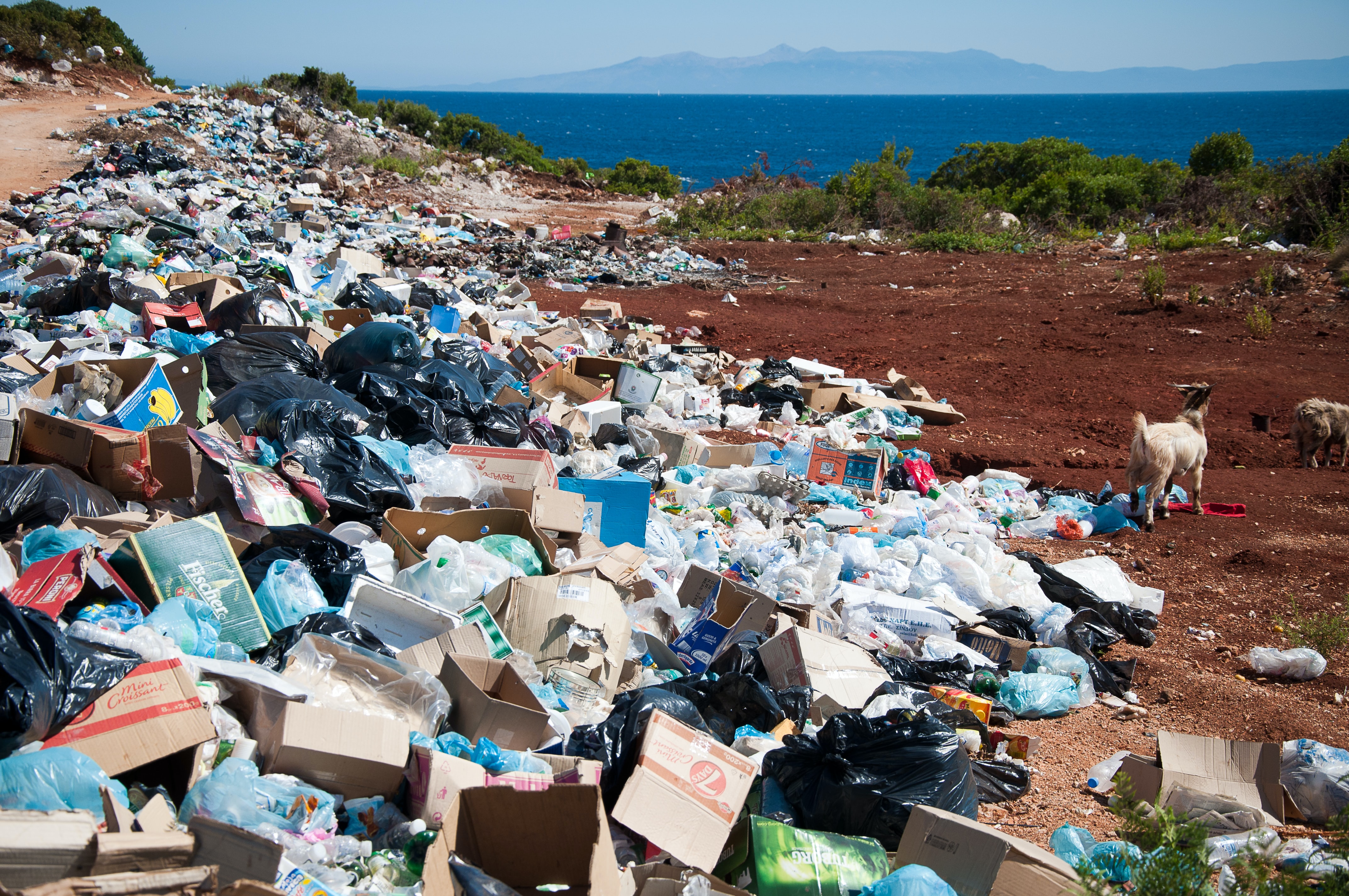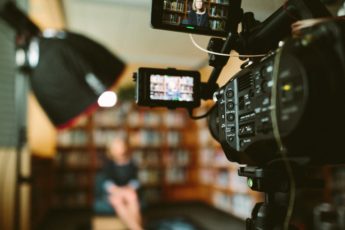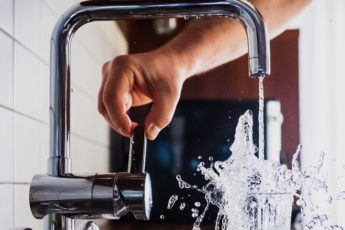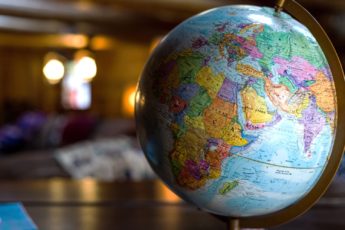It’s impossible to ignore that our love of stuff is having a negative impact on our world; one that urgently needs to be addressed. This makes it a perfect topic to weave into your environmental science, geography, or current issues class.
In my high school Global Issues class, a required current-events-meets-human-geography course, we spend a few weeks looking at all sorts of waste and recycling issues. We examine things like the Great Pacific Garbage Patch, how landfills work, and the growing zero-waste living movement. My goal is to empower my students with the facts about this urgent problem, but also with optimism that doable solutions exist. Especially ones that are perfect for them.
Here are some of the most powerful activities we do in our Garbage & Consumption Unit—ones that will stick with your students, too, each year.
Research Eye-Popping Data on Plastic Use
Our World in Data is a must-bookmark website for any world geography, current issues, or environmental science teacher. Oxford University runs it, and it has incredible interactive graphs and maps on every global topic imaginable, including plastic consumption and pollution.
Your kids can explore how plastic has exploded in use over the past 50 years, which countries and industries use the most, and how little ever gets recycled.
Each display has multiple ways to view the data—often in graph, table, and map form. Let kids explore these options or print them off for hand-written annotations.
Some universal questions that work for analyzing these data displays include:
What’s the largest data point? What’s the smallest?
What’s the general trend? What’s an exception to the trend?
What’s an educated guess you can make about this data?
What’s a question you have about this data?
Explore Landfills Around the World
The industrialized world has gotten so good about whisking away garbage that we have no concept of how much we really toss. Garbage cans are everywhere, and residential waste pick-up is weekly. It all just goes “away.”
Do your students know where their local landfill is? Or what it looks like? Google it and show them!
What’s scary is that a lot of these landfills, regardless of location, are hitting their capacity in part because we have no visual of the impact our consumption is having.
Pull together a few different sources that really show students what all this garbage looks like (especially one of your local landfill!) and how it really doesn’t go “away”; everything goes to real place.
These articles from Washington Post, Vice, and Bloomberg offer powerful visuals (with brief accompanying text) of some of the world’s biggest landfills, along with the environmental problems they create. Particularly eye-opening is the amount of people who make their livelihoods combing through the trash, all at an extreme risk.
Also, these easy-to-understand graphs from the Environmental Protection Agency have great visuals of things like the increase of garbage over the last 60 years and a breakdown what sort of materials are thrown away, recycled, and composted.
This 10-minute video by PBS does a great job explaining how a modern landfill works and how operators are finding solutions to handle the ever-increasing garbage we make, including using it to generate power.
Have students use a problem-solution graphic organizer to analyze what issues landfills create and what some localities are doing to fix them.
Conduct a Garbage Audit
Coordinate with your food service staff to save a garbage bag worth of waste after lunch one day. If your school also provides recycle and compost bins, ask if you can have some of those contents too.
After having examined those EPA graphs and landfill photos, it’s sobering to see all this garbage up close.
Some questions to pose as students conduct their audit:
What things make up the bulk of the garbage?
What kinds of and how much single-use disposable items were thrown out?
Is there anything in the garbage that could be diverted to recycle or compost?
What sort of changes could be made to help our lunches be less garbage-generating?
Show a Powerful Film
There are several good ones available online; these are some of the more recent ones that have come out. Simply pick whichever one best matches the topics you want to explore and the time you have.
Plastic Paradise: The Great Pacific Garbage Patch (1 hour) explores the swirl of plastic objects floating in the Pacific Ocean that is roughly twice the size of Texas. The film interviews experts and activists who are trying to expose this remote part of the world to encourage us all to use less plastic.
Maldives: Fighting Back the Tides of Trash (25 minutes) by DW, a German public broadcasting channel, looks at how this small island nation is handling their big garbage problem.
Just Eat It: A Food Waste Story (1 hour 15 minutes) reveals how much food never makes it to the consumer, as well as how much still gets thrown away after we buy it. The filmmakers even chronicle their pledge to quit grocery shopping and survive only on discarded food.
Food Waste is the World’s Dumbest Problem (9 minutes) by Vox, is about the same topic and great if you only have a few minutes. This short video focuses on simple changes that have a huge effect on reducing food waste.
The True Cost (55 minutes) gives a behind-the-scenes look at the world of “fast fashion” (inexpensive, trendy clothes) and examines the environmental cost of all this excess.
Plastic Wars (53 minutes) by PBS’s Frontline, goes in-depth on how plastic and fossil fuel companies have been promoting recycling to sell more plastic, knowing much of it can’t be recycled.
Rob Greenfield’s YouTube channel has several engaging 5-30 minute videos on how he is living a more trash-free life, including this 5-minute one of him wearing the trash he creates for 30 days. He has several others on how he grows and forages his food, and lives in a 100-square-foot tiny home.
You could easily accompany any of these films with a related news article or data graphs if you wanted to go deeper on the issues discussed.
Investigate Zero Waste Living
The important thing to remember about this lifestyle is that it’s aspirational. Not everyone can be zero- or near-zero-waste, but many people who are trying offer us a peek inside their attempts.
YouTube has a seemingly endless collection of people telling their stories of living a life (mostly) free from generating waste. Many of these videos are 10 minutes or less, allowing students to easily watch a few different ones. Here are some good ones, but feel free to get lost down this rabbit hole and find more:
A 20-something woman tries zero waste for 30 days, interviewing experts along the way (5 minutes).
An Australian family of 5 living zero-waste in the suburbs (9 minutes).
One of the pioneers in the zero-waste movement, Bea Johnson, gives a look inside her daily life (8 minutes).
Lauren Singer is another been-doing-it-for-years zero-waster who shares all sort of how-to tips videos on her You Tube channel for making various aspects of your life garbage free.
After assigning a few videos to watch, or having students choose ones from a list, hold an informal discussion about what they saw.
If you have more time, challenge your students to research how much of one item is thrown away annually, say single-use yogurt containers, and what some zero waste alternatives might be. I have my students make a poster of their findings which we display in the hallway around Earth Day.
Reflect on Happiness & Stuff
After watching even just a few videos, your students will likely hear a common thread about how these zero-wasters realized all the stuff of consumerism didn’t make them happier. And there’s a lot of science to back that up that may surprise your students.
Here are a few engaging, student-friendly articles:
The science of why you should spend your money on experiences, not things, Fast Company
Psychologists say they’ve found the exact amount of money you need to be happy, MarketWatch
Does money equal happiness? It does, but only until you earn this much, USA Today
How winning the lottery affects happiness, according to psychology research, Business Insider
After assigning a few different articles for students to read (or have each read different ones), hold a Socratic Seminar on the question “Does money buy happiness?”
Whether your kids are young middle schoolers or seniors on the verge of adulthood, the thoughtfulness with which they will address that question is bound to impress you.
I hope these easy-to-do activity ideas help you make the massive amounts of garbage we have come to create more real for your students. To grab already-done lessons that include these ideas and more, check out my complete Garbage & Consumption PBL unit!
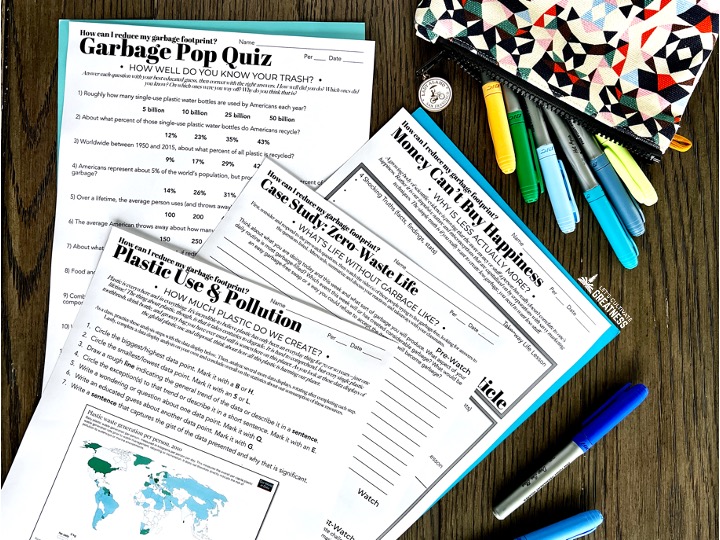
Image photo credit: Antoine Giret


